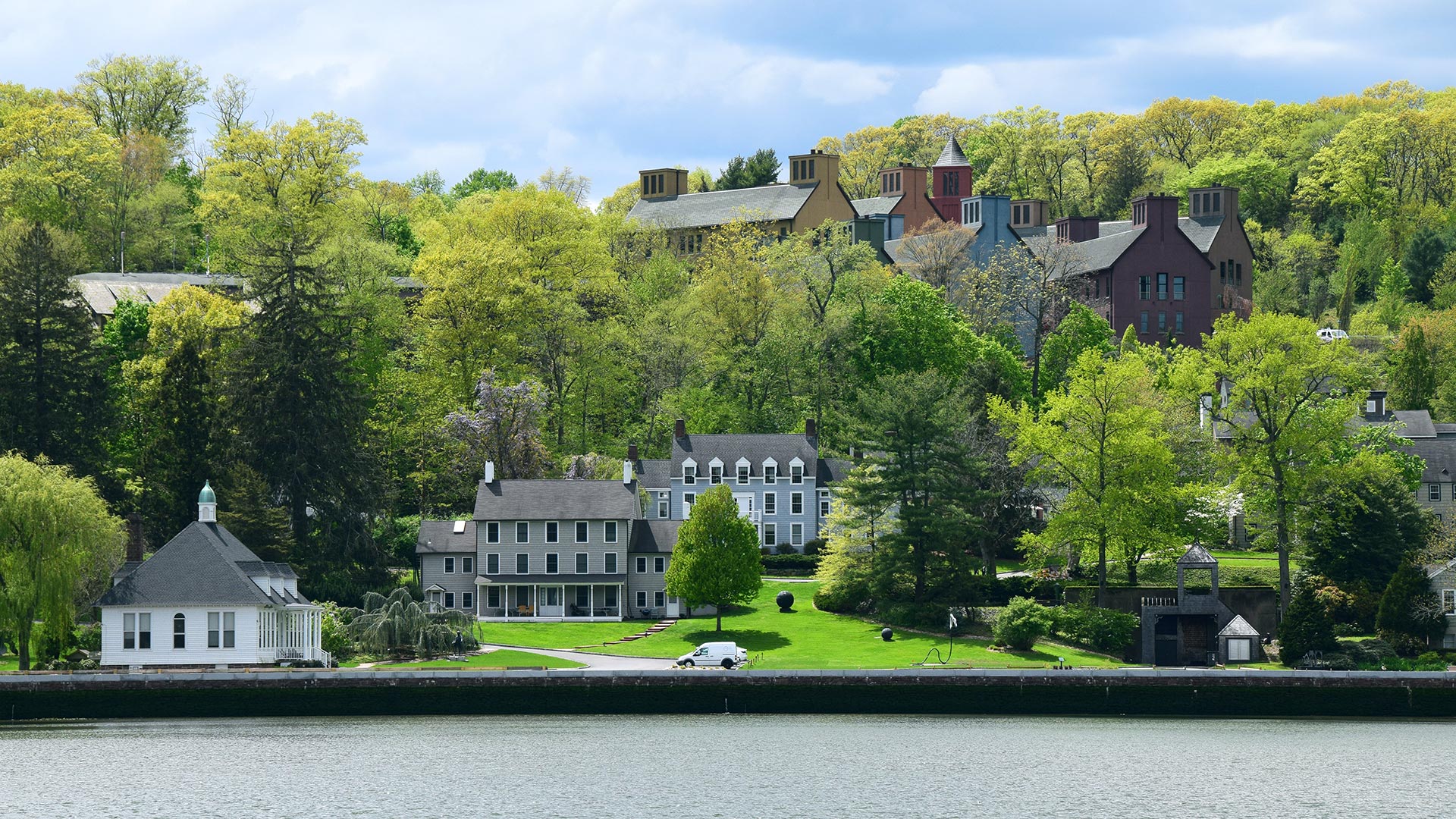Test your science knowledge
The grounds of Cold Spring Harbor Laboratory is a time capsule for revolutionary science. While some buildings have been renovated to accommodate modern research, the history still defines the structure. Learn about the cool science that has marked the trajectory of the Lab, and see some science-related art that adorns the buildings today!
This sculpture by Mara G. Haseltine consists of oblong-shaped blobs strung together by a ribbon. What biological process is this supposed to depict?
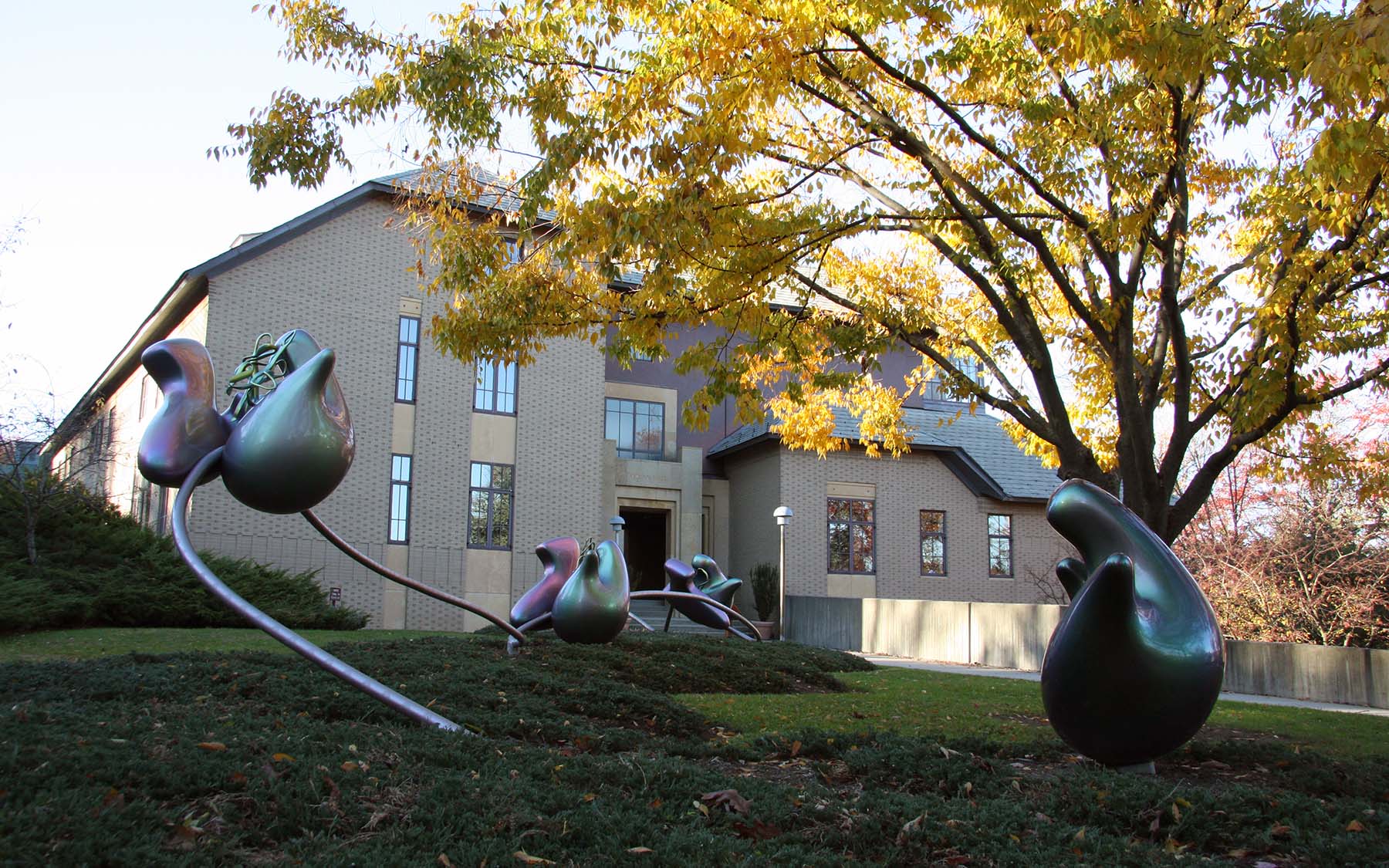
The statue, Waltz of the Polypeptides, depicts how a protein is created in cells. The oblong blobs are ribosomes, and the ribbon that runs through them is the protein. Ribosomes receive protein-making instructions from messenger RNA and uses them to build various amino acids into strings of proteins and polypeptides.
This sculpture by Dale Chihuly hangs in the Marks neuroscience building on campus. What biological process is it supposed to represent?
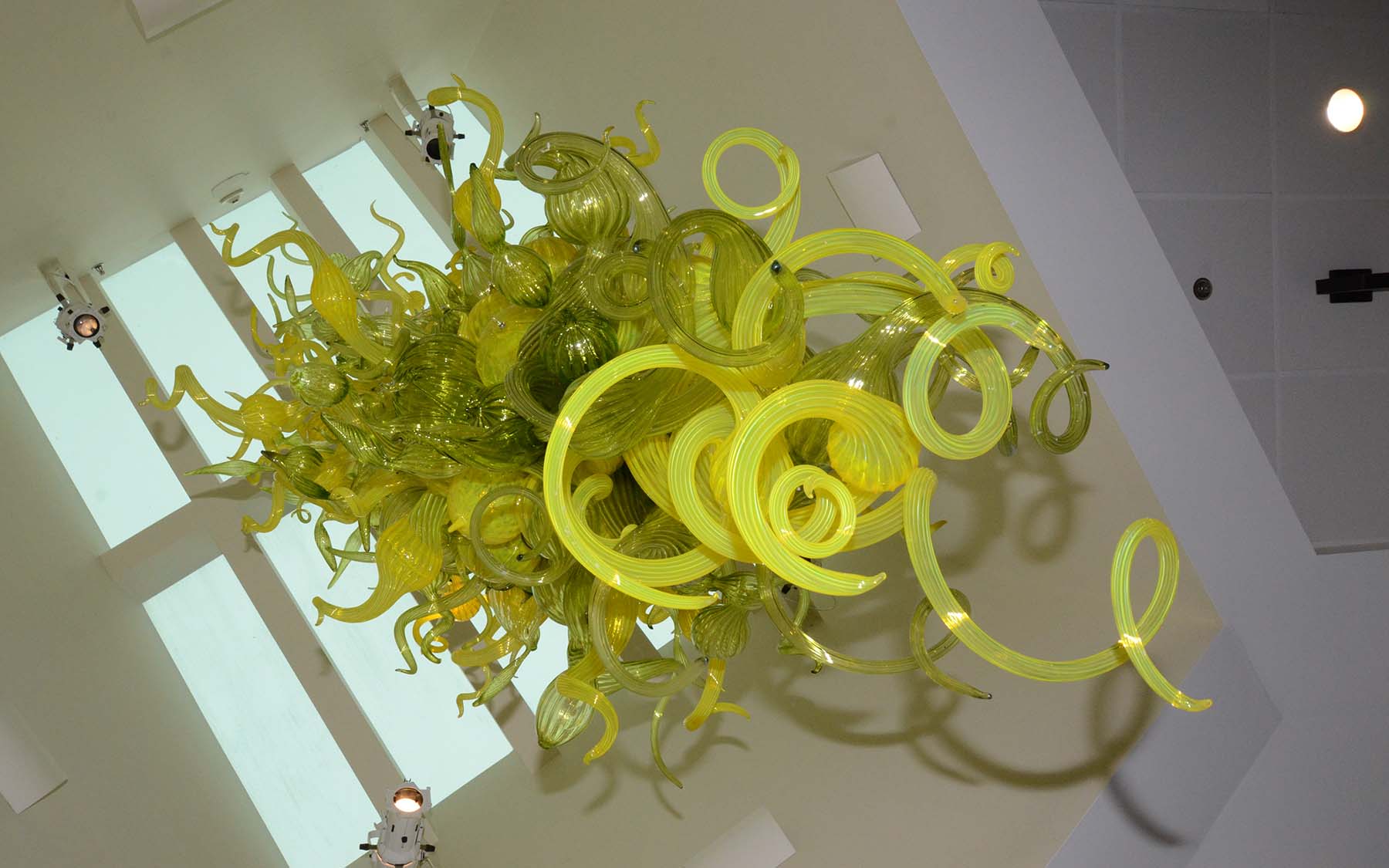
This statue, Twisting Dendrites, is the artist’s blown-glass depiction of the complex networks of nerve cells that receive inputs from other cells.
The weathervane on this gazebo overlooking the harbor isn’t your usual bird or compass. What biological molecule is this?
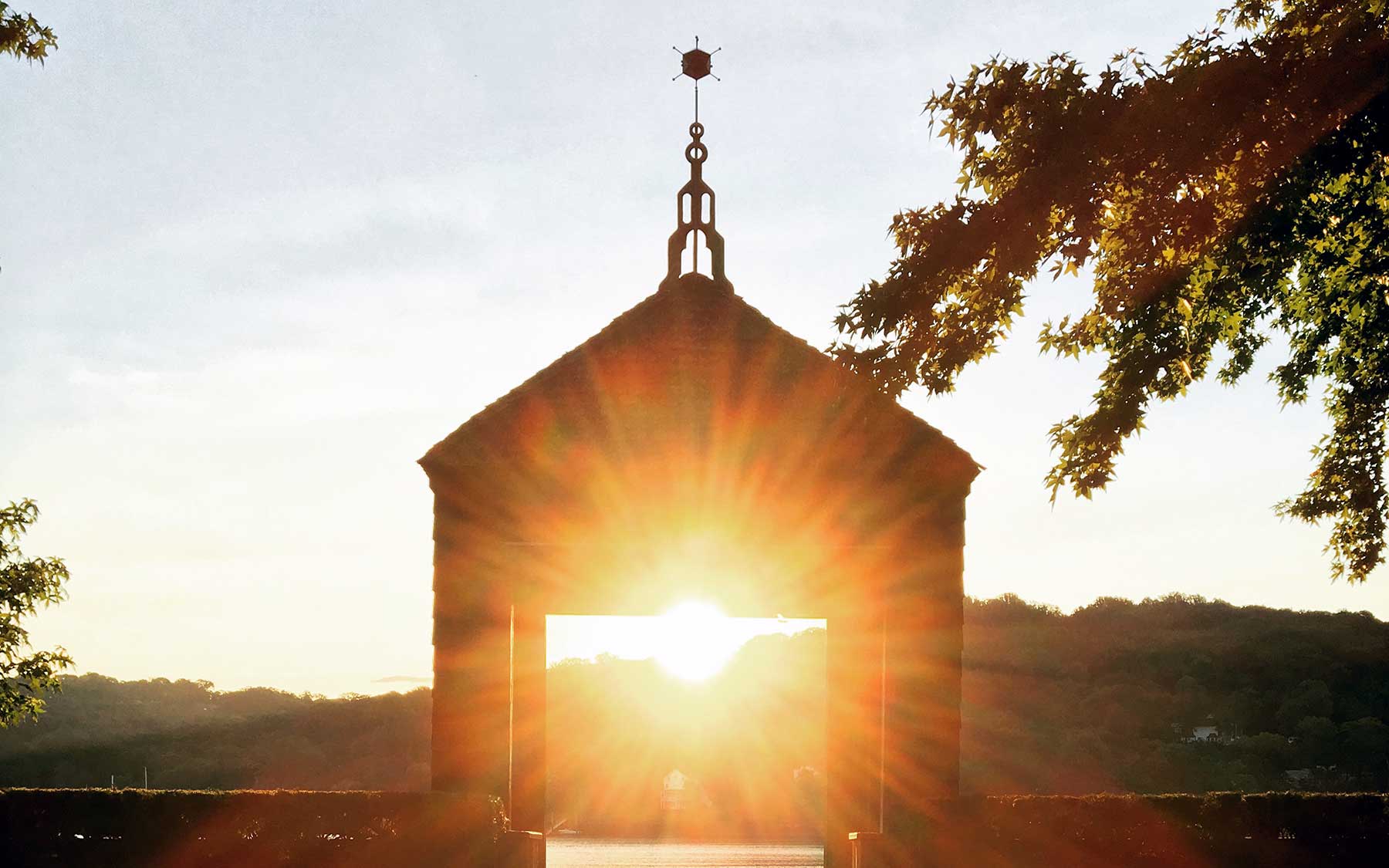
The weather vane is an adenovirus. It helped CSHL scientists, including Nobel laureate Richard Roberts, discover the phenomenon now known as RNA splicing.
This statue is of a scientist, considered one of the fathers of modern genetics, who revolutionized evolutionary thought. He also penned On the Origin of Species. Who is it?
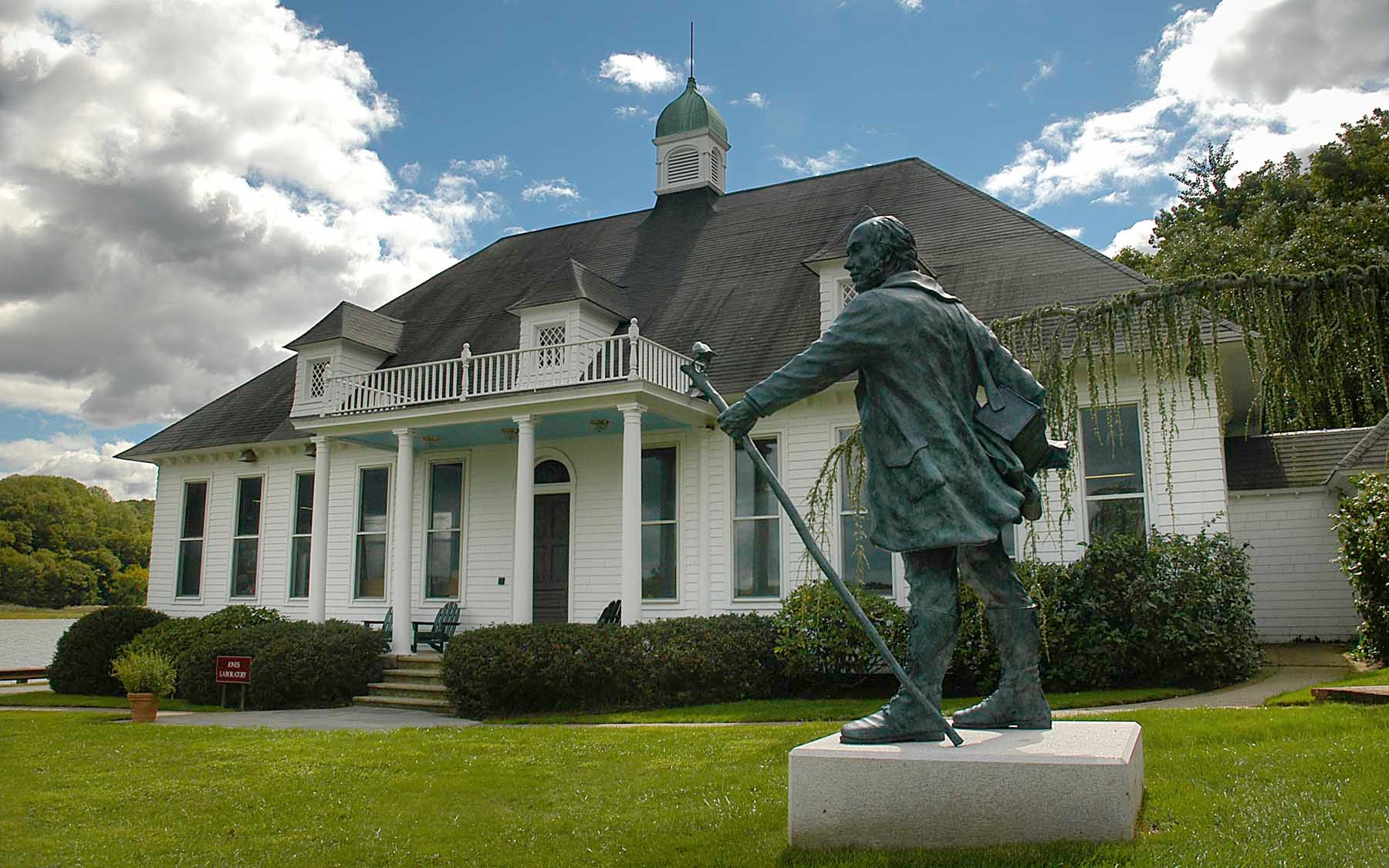
It is Charles Darwin who believed that the evolution of life could be traced through fossils and living examples. A large part of his findings centered around his travels to the Galapagos Islands, New Zealand, Australia, and South Africa. His book On the Origin of Species outlined his "theory of evolution through natural selection."
The clocktower that sits on the upper campus resembles a biological organism that helped inform Alfred Hershey and Martha Chase’s experiment on how genetic material was passed on. What is it?
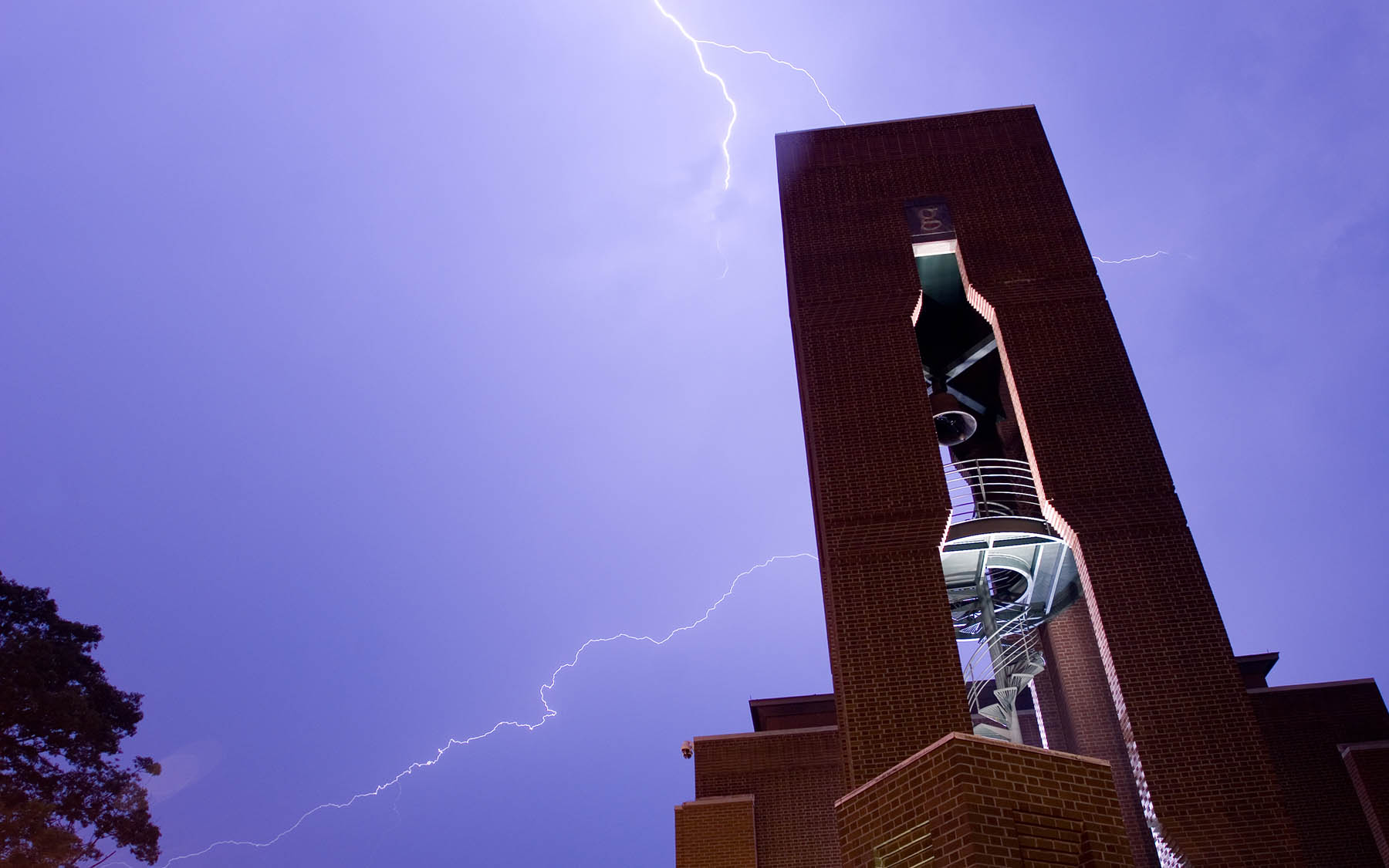
The clocktower, with its stringy legs, is designed to depict a bacteriophage, which is a virus (see our Quiz Gone Viral) that can infect bacteria. On each of the four faces of the clock, you can see the letters A, T, C, G, standing for adenine, guanine, cytosine, and thymine. These are the four nitrogenous bases found in DNA, the material used to pass on genetic information. The staircase in the middle of the clocktower is shaped after the double helix of DNA.
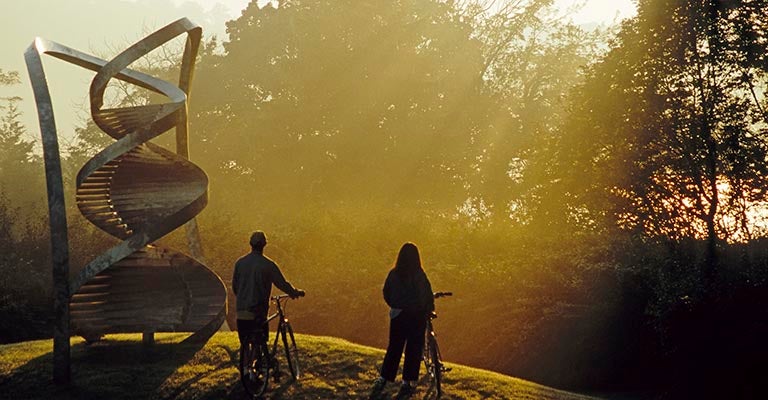
Share your Results:
